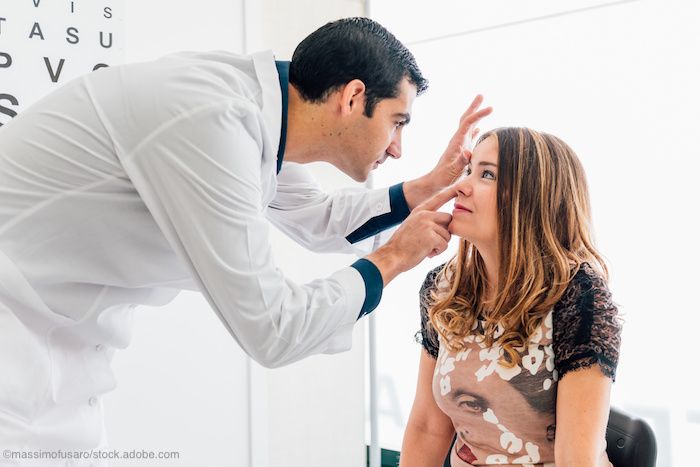Article
Ophthalmic community focusing on DED education
Author(s):
The industry is increasing awareness during Dry Eye Awareness Month in July.

The ophthalmic community is focusing its attention on dry eye disease to increase patient and provider awareness as part of Dry Eye Awareness Month 2019.
In 2017, the Tear Film & Ocular Surface Society (TFOS) released its TFOS Dry Eye Workshop II1 (known as TFOS DEWS II) as part of its efforts to raise awareness of the increasing global burden of DED.
On July 10, TFOS and the Alliance for Eye and Vision Research (NAEVR) will hold a Congressional luncheon briefing and dry eye screening in Washington, D.C., to formally present on the ongoing impact of the TFOS DEWS II report.
A “Test Your Tears” dry eye screening (using osmolarity) will be held concurrently, TFOS said in a statement.
“The vision community is making Congressional education about dry eye a priority since it impacts healthcare policy, as it is one of the most frequent causes of patient visits to eye care providers,” The organization said in its statement. “Federal research funding from the National Institutes of Health (NIH), including its National Eye Institute (NEI), is being used to study dry eye causes and develop treatments.”
The dry eye panelists expected to speak at the briefing include Victor Perez Quinones, MD, of Duke University; Deborah S. Jacobs, MD, of Massachusetts Eye and Ear/Harvard Medical School; Bridgitte Shen Lee, OD, of Vision Optique; and David A. Sullivan, MS, PhD, of the Schepens Eye Research Institute/Harvard Medical School and TFOS Founder.
RELATED: Zeroing in on the presence of dry eye
Several other groups will take part in the briefing, including the American Academy of Ophthalmology, American Academy of Optometry,American Optometric Association, Association for Research in Vision and Ophthalmology, Healthy Women, Prevent Blindness, Research to Prevent Blindness, Sjögren’s Syndrome Foundation, and Women’s Eye Health.
Raising Awareness
Beyond the TFOS/AEVR outreach, other organizations are providing materials for patients and/or handouts for physicians to educate their patients on treatment options for DED or on the overall disease state. Here is just a sampling:
The National Eye Institute has a section on its website devoted to dry eye that physicians can use to educate patients about the disease.
The Center for Sight’s Dry Eye e-book “breaks down everything [patients] could ever want to know about this pesky disease that affects millions of Americans every year.” Although the group is located in Las Vegas, the details included in its book transcend geographic location.
An affiliate of AEVR, the National AEVR (NAEVR) has recently concentrated on raising awareness of the ethnic and racial differences that are becoming more prevalent in diagnosing DED.
In May, the group submitted written testimony to the Senate, “urging the Subcommittee to appropriate at least $41.6 billion for National Institutes of Health (NIH), a $2.5 billion or 6.4 percent increase over the FY2019 program level. This increase would allow for meaningful growth above inflation in the base budget to support promising science across all Institutes and Centers, as well as to ensure that funding from the Innovation Account established through the 21st Century Cures Act would supplement NIH’s base budget, as intended, through dedicated funding for specific programs.”
NAEVR submitted similar testimony to the House Appropriations Subcommittee in April.
Research to Prevent Blindness offers professionals several videos that can be shared with patients as well.
Sjögren’s Syndrome Foundation notes it is “dedicated to providing the most up-to-date information to patients and healthcare providers.” It offers links to its most recent brochures and fact sheets, including those specific to dry eye as a downloadable foundation brochure.
References:
1. Craig JP, Nelson JD, Azar DT, et al. TFOS DEWS II Report Executive Summary. Ocul Surf 2017;15(4):802-12.
Newsletter
Don’t miss out—get Ophthalmology Times updates on the latest clinical advancements and expert interviews, straight to your inbox.





